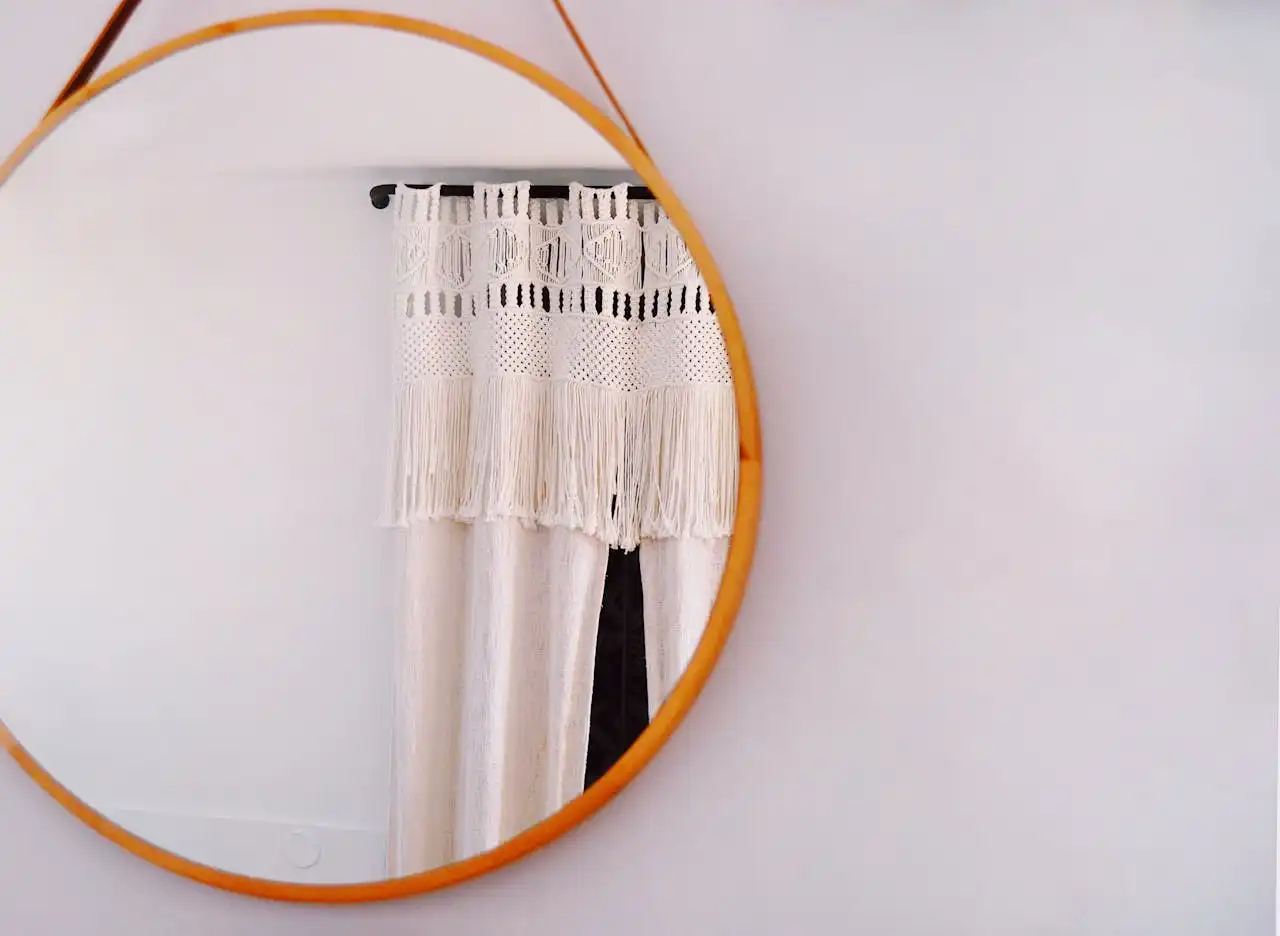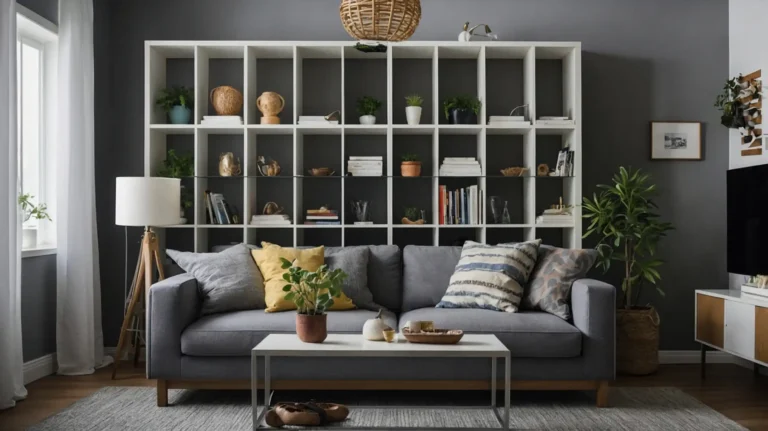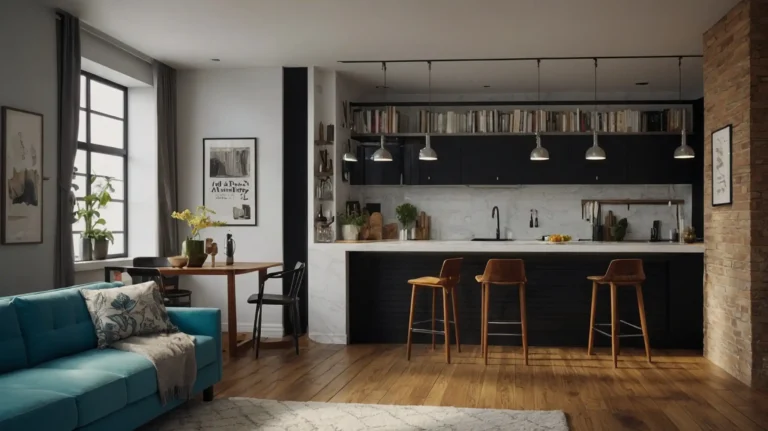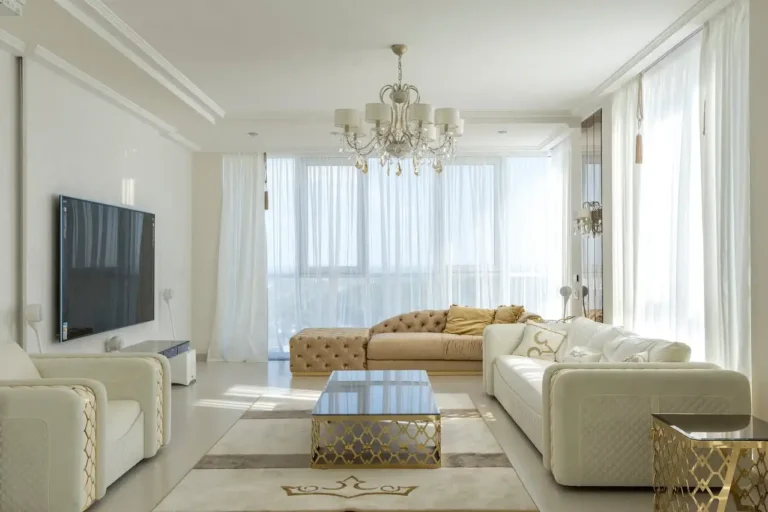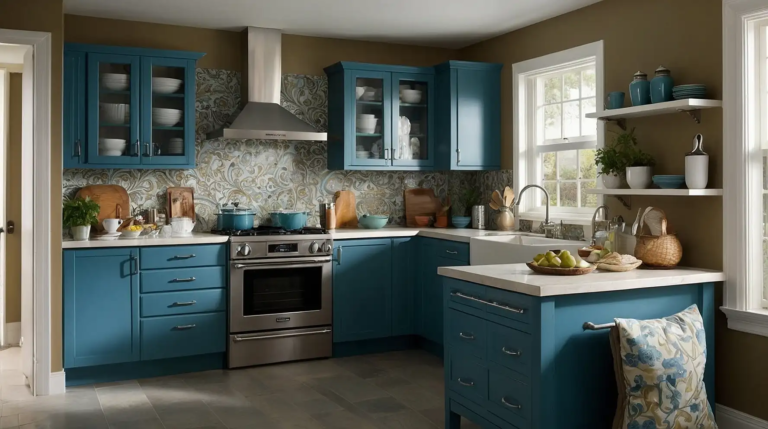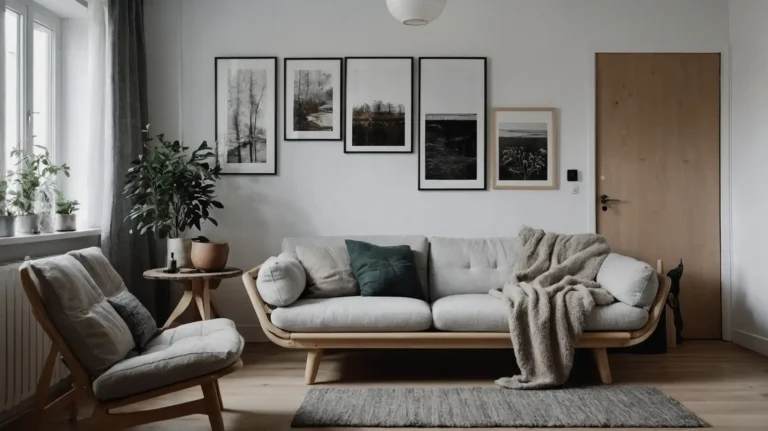Decorating with Mirrors: Tips for Light & Space Illusion
Mirrors transform your living space like magic. They bounce light around rooms and create the illusion of expanded square footage without expensive renovations.
Whether you live in a cozy apartment or spacious home, strategic mirror placement can revolutionize how your rooms feel and function.
You’ll discover professional techniques that interior designers use to maximize natural light and make cramped spaces feel airy and open.
These simple yet powerful decorating strategies will help you create a brighter, more spacious atmosphere that enhances your daily living experience.
Choose the Right Size Mirror for Maximum Impact
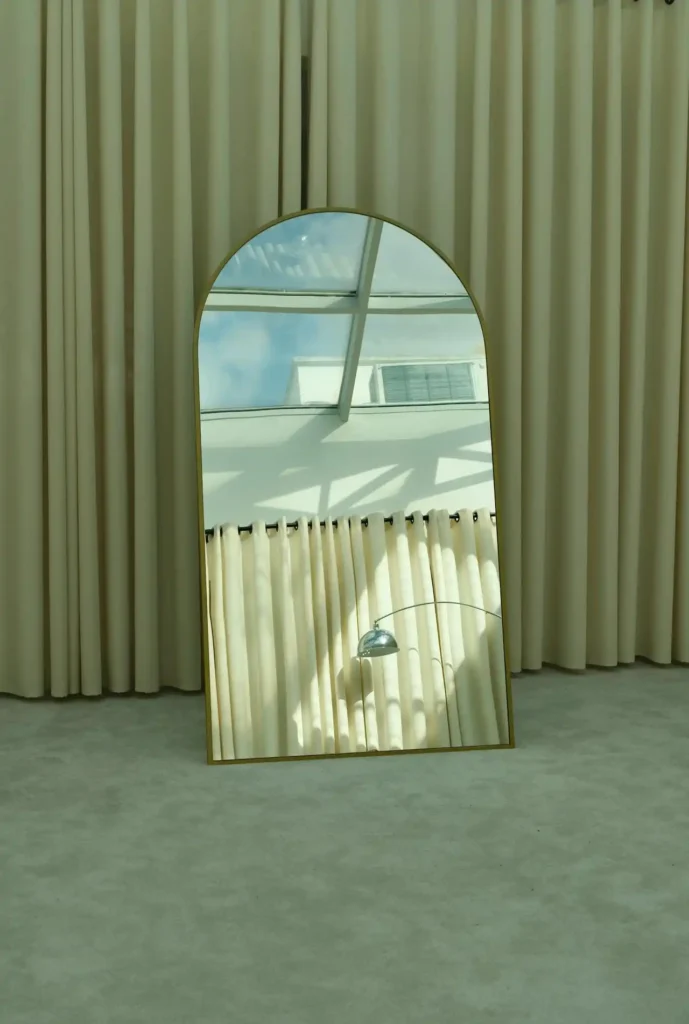
Large mirrors create dramatic transformations in your space. You want to select mirrors that feel proportional to your room and furniture.
A tiny mirror on a vast wall gets lost and provides minimal light reflection. Floor-to-ceiling mirrors work exceptionally well in narrow hallways and small bedrooms.
They stretch the visual height of your room and reflect light from multiple angles throughout the day.
Consider installing a full-length mirror that reaches from floor to crown molding for maximum effect.
Oversized mirrors above sofas or dining tables anchor these furniture pieces while doubling the perceived room size.
Choose mirrors that span at least two-thirds of your furniture’s width. This proportion creates visual balance and ensures the mirror feels intentional rather than randomly placed.
Multiple medium-sized mirrors grouped together can substitute for one large piece. This approach works particularly well when you want to create a gallery wall effect.
You achieve similar light-bouncing benefits while adding visual interest through varied shapes and frames.
Strategic Placement Opposite Windows Multiplies Natural Light
Position mirrors directly across from windows to capture and redistribute natural light throughout your room.
This technique doubles the amount of daylight entering your space and creates a brighter atmosphere all day long.
East-facing windows provide morning light that energizes your space when reflected across the room.
West-facing windows offer warm afternoon light that mirrors can spread to darker corners.
You’ll notice how much more vibrant and welcoming your room feels with this simple placement strategy.
Angle your mirrors slightly to direct light toward specific areas that need brightening. Tilt the mirror a few degrees downward to illuminate seating areas or workspace surfaces.
This focused approach helps you control where the additional light goes rather than simply bouncing it randomly.
Consider the view outside your window when positioning mirrors. This creates the illusion of bringing nature indoors while maximizing light benefits.
You want to reflect pleasant outdoor scenes like gardens or tree branches rather than neighboring buildings or parking lots.
Create Depth with Corner and Hallway Mirror Placement
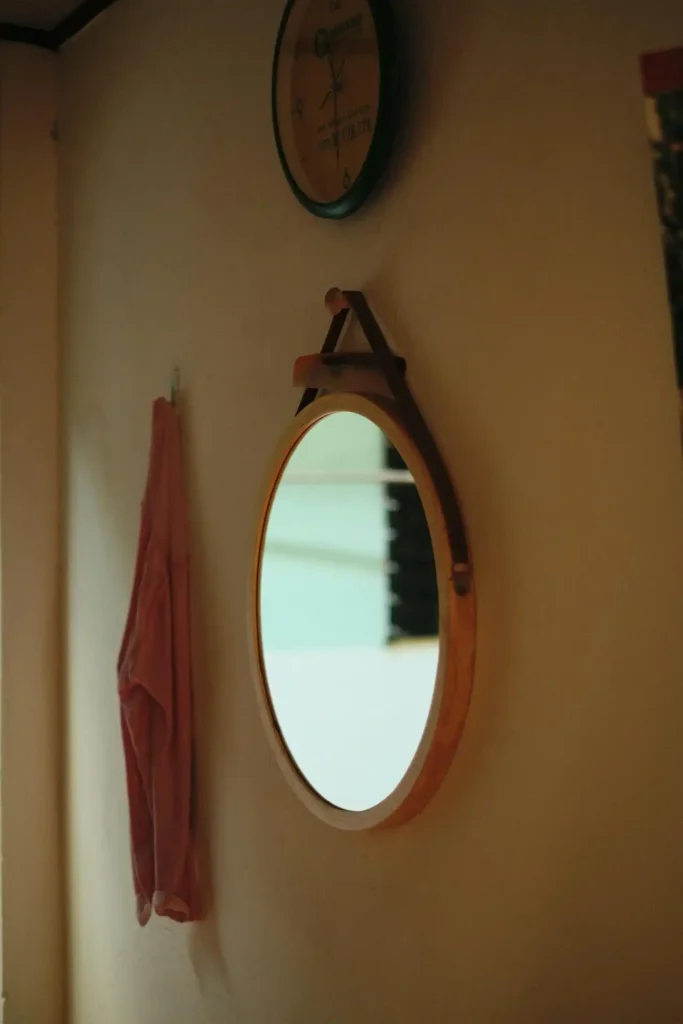
Corners often feel cramped and underutilized in room layouts. Placing mirrors in these spaces opens them up and creates the illusion of extended floor area.
You transform dead space into visually active areas that contribute to your room’s overall sense of spaciousness.
Long, narrow hallways benefit tremendously from mirror placement along one wall. You’ll find guests comment on how much larger your hallway appears.
The reflection creates the impression of width and prevents that tunnel-like feeling common in apartment corridors.
Stagger mirrors at different heights in hallways to create visual rhythm and maintain interest as people walk through the space.
Mix circular and rectangular shapes to add variety while maintaining the space-expanding benefits.
End-of-hallway mirrors create the ultimate depth illusion. Guests will feel like the hallway continues indefinitely rather than stopping abruptly.
This technique works especially well when you can reflect interesting architectural details or artwork from other areas.
Use Mirrored Furniture for Subtle Space Enhancement
Mirrored coffee tables and side tables provide surface space while maintaining visual lightness in your room.
These pieces don’t visually compete with other furniture because they reflect their surroundings rather than adding visual weight.
Mirrored wardrobes and closet doors eliminate the bulky appearance of large storage pieces.
You maintain necessary storage capacity while preventing furniture from overwhelming smaller bedrooms. The reflected light also brightens clothing storage areas naturally.
Console tables with mirrored surfaces work beautifully in entryways and behind sofas.
They provide functional surface space for decorative objects while bouncing light around and maintaining the open feeling you want in transitional spaces.
Consider mirrored backsplashes in kitchens and bathrooms where traditional mirrors might not fit your design aesthetic.
These surfaces reflect light while serving practical purposes, creating brightness without sacrificing functionality.
Layer Mirrors with Lighting for Evening Ambiance
Mirrors amplify artificial lighting just as effectively as natural light. Sconces flanking mirrors create elegant symmetry while providing practical task lighting.
Position table lamps and floor lamps where their light will reflect off mirror surfaces and spread throughout your room during evening hours.
This combination works exceptionally well in bathrooms, bedrooms, and entryways where you need both ambient and focused lighting.
Candles placed strategically near mirrors create romantic, flickering light effects that feel magical in dining rooms and bedrooms.
The reflected flames multiply the warm glow and create intimate atmosphere for special occasions.
Avoid placing mirrors where they directly reflect harsh overhead lighting or television screens.
These reflections create glare and uncomfortable viewing conditions rather than the soft, ambient lighting you want to achieve.
Frame Selection Enhances Your Decorating Style
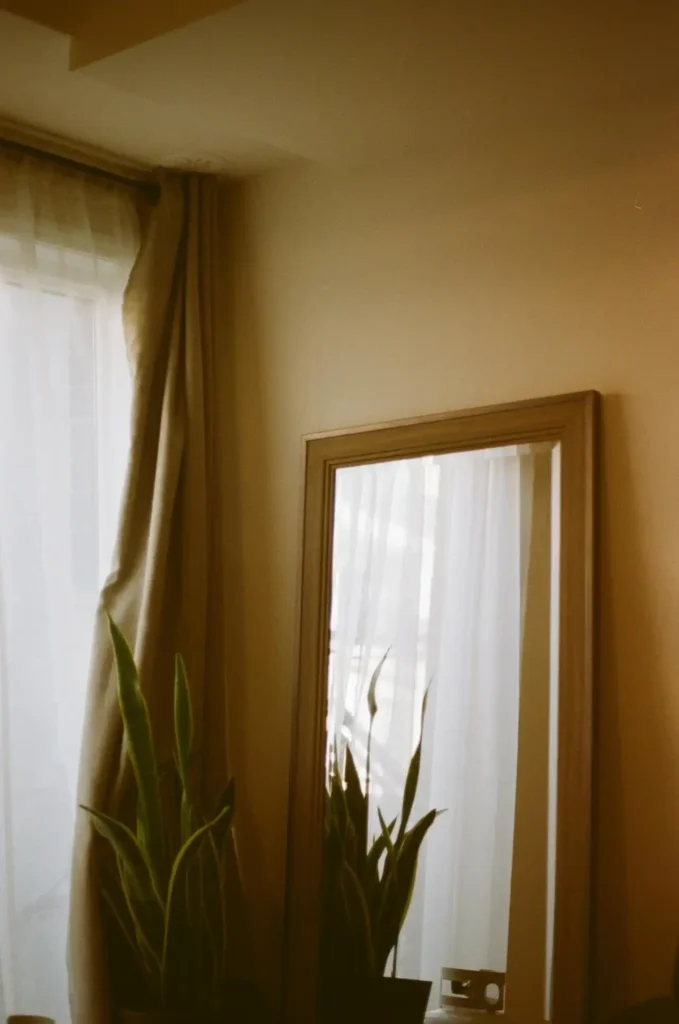
Mirror frames contribute significantly to your room’s overall aesthetic while affecting how the mirror integrates with existing furniture and décor.
Choose frames that complement your decorating style rather than competing with it. Ornate, gilded frames suit traditional and glamorous decorating styles.
These mirrors become statement pieces that anchor your room’s formal atmosphere while providing light and space benefits.
Gold and silver frames reflect additional light around their edges.
Sleek, minimal frames or frameless mirrors suit contemporary and modern spaces. These options maintain clean lines while maximizing the reflective surface area.
You achieve space-expanding benefits without introducing decorative elements that might conflict with minimalist aesthetics.
Wooden frames coordinate beautifully with natural and rustic decorating themes. Choose frame finishes that echo your furniture woods for cohesive room design.
Dark frames provide contrast against light walls, while light frames blend seamlessly into neutral color schemes.
Avoid Common Mirror Placement Mistakes
Never hang mirrors where they reflect clutter, unsightly views, or private areas. Skip tiny mirrors in large rooms or oversized mirrors in small spaces.
Mirrors amplify whatever they reflect, so ensure you’re doubling pleasant views rather than highlighting problems you’d prefer to minimize.
Avoid placing mirrors directly opposite each other, which creates infinite reflections that can feel disorienting and overwhelming.
This setup rarely provides the calming, space-enhancing effect you want to achieve in living spaces.
Don’t hang mirrors too high on walls where they can’t reflect useful light or create the illusion of expanded space.
The mirror’s center should align roughly with eye level when you’re standing in the room for optimal effectiveness.
Proportion matters tremendously in creating the sophisticated, intentional appearance that makes mirror decorating successful.
Creative Techniques for Unique Mirror Applications
Mirrored ceiling medallions around light fixtures create stunning focal points while reflecting light downward into your room.
This technique works particularly well in dining rooms and bedrooms where you want dramatic lighting effects.
Antiqued or tinted mirrors add character while providing space and light benefits. Backlit mirrors provide both task lighting and ambient illumination.
These options suit vintage and eclectic decorating styles where perfect reflection isn’t the primary goal. You achieve ambiance along with functionality.
Geometric mirror arrangements create modern art installations that serve decorating purposes.
Cluster hexagonal, circular, or triangular mirrors in patterns that reflect light while adding visual interest to blank walls.
These fixtures work exceptionally well in bathrooms and dressing areas where you need even, shadow-free lighting for grooming activities.
Maintenance Tips for Sparkling Reflective Surfaces
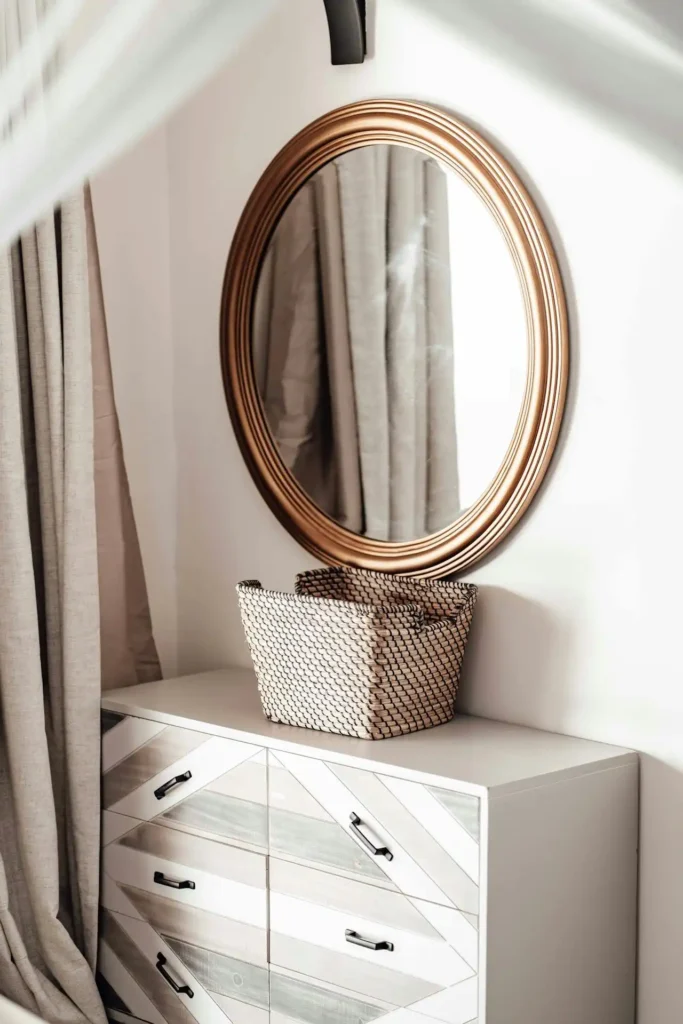
Clean mirrors regularly with appropriate glass cleaners to maintain their light-reflecting capabilities.
Dirty or streaked mirrors diminish the brightness and space-enhancing effects you want to achieve throughout your home.
Use microfiber cloths that won’t scratch mirror surfaces or leave lint behind.
Spray cleaner onto the cloth rather than directly onto the mirror to prevent liquid from seeping behind the glass and damaging the reflective backing.
Address chips or cracks promptly to prevent further damage and maintain your mirrors’ effectiveness.
Small imperfections can spread over time and compromise both appearance and functionality.
Consider professional cleaning for large or difficult-to-reach mirrors that you can’t safely clean yourself.
Maintaining pristine reflective surfaces ensures you continue receiving maximum light and space benefits from your mirror decorating investments.
Conclusion
Strategic mirror placement transforms any space into a brighter, more spacious environment that feels welcoming and open every day.

